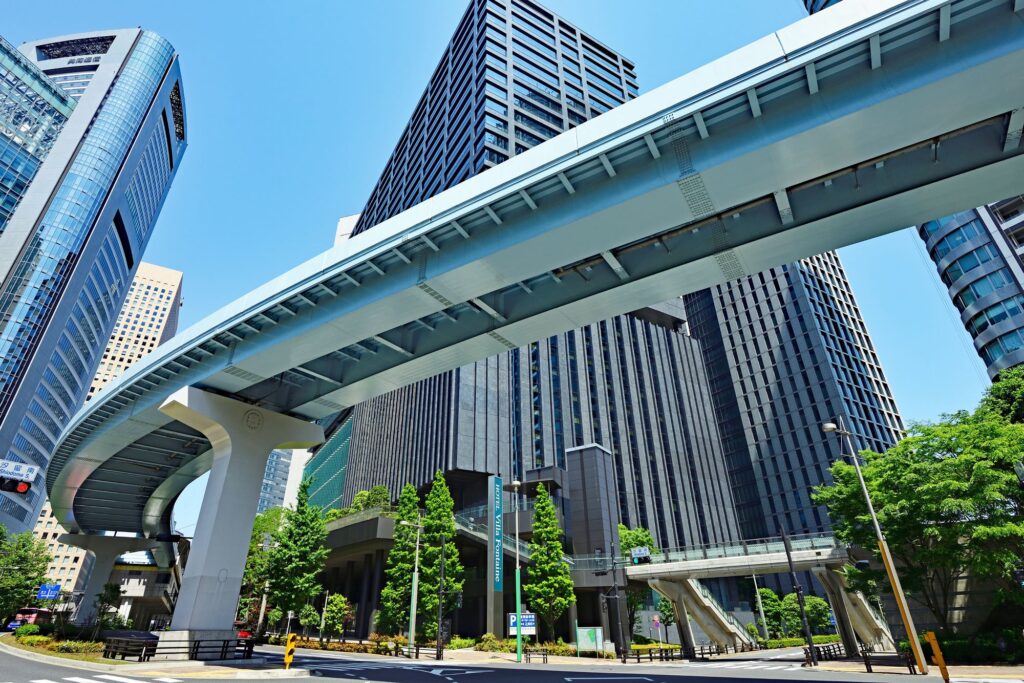Requesting the Removal of Reviews Violating the Guidelines on Tabelog

If you’re unsure about purchasing a book or magazine, you can go to a bookstore and browse through it. If it’s clothing or shoes, you can try them on at a boutique or similar store. This is one of the drawbacks of online shopping, where you can’t ‘browse’ or ‘try on’ items. Even if you were to visit a café or restaurant in person, you wouldn’t be able to ‘browse’ or ‘try on’.
You can’t just walk in, take a seat, observe the atmosphere, or sample a bite of pasta. However, Tabelog, a Japanese restaurant review site, allows you to ‘sample’ restaurants online by providing information on the layout, menu, prices, quality of food, ambiance, and customer service. Moreover, the vast amount of reviews posted on Tabelog cover most restaurants across Japan, from fast food chains to long-established traditional restaurants. The impact of enabling this ‘sampling’ of dining establishments on modern dietary habits is immeasurable.
What is Tabelog?
Tabelog is a gourmet website operated by the Kakaku.com Group, which launched its services in March 2005. The concept of the site is “a gourmet site for those who do not want to make a mistake in choosing a restaurant”, and it features restaurant information from all over Japan, along with user reviews.
As of early April 2019, it has listed 913,118 restaurants and 30,313,856 reviews, and it is said that more than 118 million people use it every month.
Users can create an account to post restaurant reviews and images. Reviews can also be edited later. Reviews are evaluated based on five categories:
Food/Taste, Service, Atmosphere, CP (Cost Performance), and Alcohol/Drinks
The aim is to convey the subtle tendencies of each restaurant in an easy-to-understand manner, based on the criterion of “being useful for others to read and refer to”.
The review scoring system is based on a standard of 3 points out of a full score of 5, and fluctuates based on user review scores (although the exact calculation formula for scoring is not disclosed by Tabelog, it has been revealed that it is a weighted average, not a simple average). The unique method of Tabelog, where scores are not reflected in the restaurant’s rating unless a certain number of posts have been made after user registration, and where extremely low ratings cannot be given, seems to ensure the “neutrality and fairness” advocated by Tabelog to a considerable extent.
The method of “not reflecting the score for the restaurant unless a certain number of posts have been made after user registration” is impossible for job change sites, but it is a method that should be adopted by other types of review sites. Isn’t the method of “not being able to give extremely low ratings” a method that should be introduced on all review sites?
Users of “Tabelog” (Japanese Restaurant Review Site)
Users of Tabelog can be divided into three categories. These include ‘Reviewer Members’ who actually rate restaurants and post reviews, ‘Guest Members’ who select restaurants based on scores and reviews, and users who use Tabelog without registering.
- Reviewer Members: Post reviews
- Guest Members: Bookmark restaurants
- Users: View restaurant information
The most unique among the three are the Reviewer Members. They are the information providers who post reviews, and unlike the other two categories, they are also pioneers who explore new restaurants based on reviews and information outside of Tabelog. On the other hand, the difference between Guest Members and Users is limited to the ability to bookmark restaurants, register favorite reviewers, and use coupons.
As users become more experienced, they tend to prioritize reviewer rankings over restaurant rankings. This ranking is largely composed of recent attention, number of reviews, and number of photos, followed by regional and genre-specific rankings. As users become more accustomed to the system, they often stop choosing restaurants based on scores and rankings, and instead find their favorite reviewers from the rankings and search for restaurants recommended by those reviewers. In other words, user behavior, which was initially search engine-driven, gradually shifts to proactive actions based on the evaluations accumulated within Tabelog.
Calculation Method of Scores
The scores on Tabelog are not simply averages. The impact each review has on a restaurant’s score varies depending on the reviewer. It is designed under the principle of giving more weight to the influence of reviewers who have extensive experience in dining out. For reviewers who repeatedly post on Tabelog, it seems that their influence is set based on various factors. For example, the evaluation of a reviewer who posts for the first time is not reflected in the score at all, but the evaluation of a reviewer with high influence is greatly reflected in the score. Also, there may be cases where the score is not reflected depending on the genre. For example, even if a reviewer who is strong in udon reviews Chinese food, it does not greatly affect the score. By weighting the influence, the reliability of the score is ensured.
Furthermore, if no evaluations are gathered, no score is given and it does not fluctuate. As an indicator that reflects the voices of reviewers, the system is designed to increase the score by gathering more high evaluations from reviewers with influence. For example, if the reviewers have the same influence, a restaurant with only two 5-point evaluations will have a lower score than a restaurant with 100 5-point evaluations. The same applies when the score decreases.
Moreover, if the overall score for a restaurant is 4 points or more, and the review is written by a reviewer with high influence, it will be displayed prominently at the top of the review list for each restaurant as a “Pickup Review”.
The calculation of restaurant scores is updated twice a month, on the first and third Tuesdays. Therefore, there will be a time lag of up to about two weeks from the date of the review post until the reviewer’s score is reflected in the restaurant’s evaluation.
How to Interpret the Scores
Tabelog, a restaurant review site, suggests that the scores should be used as “just one reference point, please use the following three ranges as a guide”.
Generally, scores of 4.00 and above (around the top 500 overall)
These are restaurants that have received high ratings from Tabelog users with extensive dining experience.
There is a very high probability of satisfaction at these establishments.
Generally, scores of 3.50 and above, but less than 4.00 (about the top 4% overall)
These are popular restaurants among many Tabelog users.
There is a high probability of satisfaction at these establishments.
Generally, scores less than 3.50 (about 96% overall)
These are restaurants that have not yet received sufficient ratings from Tabelog users or have mixed reviews.
There are many hidden gems in this category, and there is a possibility that they may score above 3.5 in the future.
The reason why most restaurants score less than 3.50 is due to Tabelog’s unique method of not allowing extremely low ratings. As a result, users are encouraged to read the reviews in detail.
Tabelog Review Guidelines
On December 13, 2018 (Heisei 30), the “Revised Guidelines” were established as rules for operating a healthy community site. These guidelines, which should be adhered to when posting reviews, are roughly as follows. Reviews that violate these guidelines may be subject to modification or deletion at the discretion of Tabelog.
1: Always post reviews of restaurants where you have actually dined.
Example: I didn’t eat because I didn’t like the attitude and left.
2: Posting about events that could harm the restaurant and are difficult to verify is prohibited.
Example: Eating the meat here always gives me a stomachache.
Example: They use chemical seasonings (reviews that make assumptions about the restaurant’s cooking methods or ingredients).
3: Complaints about hygiene management should be directed to the appropriate authorities such as the health department.
Example: There were bugs flying around the table.
4: Content related to legal or contractual violations by the restaurant should be reported to the appropriate authorities or parties involved.
Example: They serve raw liver (a food that is prohibited from being sold or served by law).
Example: The staff of this restaurant park on the street.
5: It is prohibited to criticize, slander, or ridicule other users, whether specific or unspecified.
Example: I can’t believe the taste of Mr./Ms. ○○ who gave this restaurant five stars.
6: Content that stereotypes or criticizes/discriminates against specific races is prohibited.
Example: It can’t be helped that the service level is low because they are (race name).
7: When posting criticism, it should not be subjective, and definitive expressions unrelated to the context are prohibited.
Example: It’s not worth going to such a bad restaurant.
8: Even if it is subjective, it is prohibited to criticize individuals related to the restaurant or to criticize, slander, or ridicule other customers, whether specific or unspecified.
Example: The attitude of a staff member named ○○ was the worst.
Example: The customer next to me was noisy and annoying.
9: Even if it is subjective, inappropriate expressions for reviews will be requested to be revised.
Example: I hope they go out of business, give me my money back.
10: Content related to personal complaints or troubles with the restaurant is prohibited.
Example: They charged me for another customer’s bill by mistake.
Example: My umbrella was missing. It must have been stolen.
11: Posting reviews of restaurants where there was trouble is prohibited.
12: Reviews that lead to illegal activities or criminal acts are prohibited.
Example: I’ve never been ticketed for parking on the street near this restaurant.
Example: The owner is elderly, so you won’t get caught if you dine and dash.
13: Descriptions that infringe on the privacy of restaurant staff and third parties are prohibited.
Example: The chef has a criminal record.
Example: Actor ○○ and actress ○○ were there incognito.
14: Posting reviews for the purpose of compensation is prohibited.
15: If it is not a regular use, check “Non-regular use review” and post.
16: Posting about food purchased through mail order or online shopping is prohibited.
17: It is prohibited for restaurant staff to post reviews of their own restaurants.
18: Posting complaints about dining experiences is not prohibited, but they should be described in a moderate manner.
As you can see, the guidelines are quite strict and detailed. Therefore, there is a possibility that posts that interfere with business from rival stores or harassment posts from complainers, etc., can be deleted based on violations of the guidelines.
Especially when doing business with customers, troubles with customers are one of the most troublesome things, and it is very troublesome to be posted negatively due to that, but it is grateful that you can have it deleted if you point out that “there was a trouble with that person”.
How to Request a Review Removal
On each review on Tabelog, there is a statement at the top that says, “If a review violates our terms, you can report it via the link on the right.” By clicking on the “Report a problematic review” link on the right, you can report a problematic review.
Subject of Inquiry
Thank you for your attention. My name is △△×× and I manage the restaurant 〇〇-tei.
I would like to request the removal of a review that contains baseless slander.
https://tabelog.com/tokyo/………[ja]
The review by a user named Monock who visited in February 2019 (Heisei 31) states in line 32, “It seems that there is a significant discount if you become a regular customer.”
However, we do not offer such a service at our restaurant. This is not true.
Also, it violates the guideline “Posts about events that are difficult to verify and may negatively affect the restaurant” and “Reviews that assume services that are not publicly available.”
Thank you for your understanding.
As shown above, be sure to clearly specify “where the review you want to be removed is,” “what part is in violation,” and “how it violates the guidelines.”
It’s hard to imagine how many violation reports they receive each day, but it must be a huge number. So, to avoid causing them unnecessary trouble, make sure to fill in the form clearly and concisely.
Please note that there is generally no reply or report, so you should regularly check the review in question.
If the review has not been removed after more than two weeks, it may be a good idea to request removal again, just to be safe.
If your removal request to Tabelog does not result in the deletion of posts that interfere with your business or are intended to harass, you may need to file a lawsuit.
For information on lawsuits against Tabelog (Kakaku.com) and how to identify posters, please read the separate articles.
https://monolith.law/reputation/tabelog-comment-reputation[ja]
Category: Internet





















